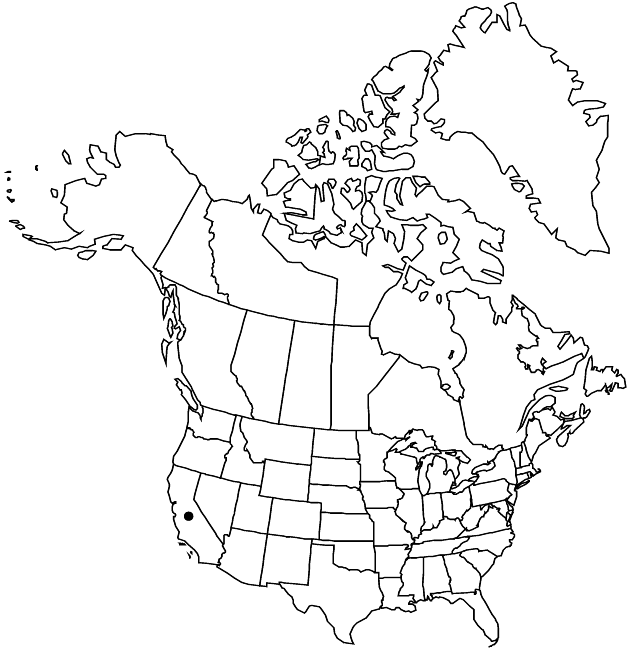Packera layneae
Phytologia 49: 47. 1981.
Perennials, 40–70+ cm; taprooted (caudices erect to suberect, branched, stout). Stems 1 or 3–4+, clustered, sparsely tomentose to glabrescent. Basal leaves (and proximal cauline, relatively thick and turgid) petiolate; blades narrowly elliptic or lanceolate to oblanceolate, 40–70+ × 5–20+ mm, bases tapering, margins entire or subentire to weakly and irregularly dentate (especially at apices). Cauline leaves gradually reduced (distal sessile, bractlike). Heads 5–12+ in open, cymiform arrays. Peduncles bracteate (bractlets usually red-tipped), sparsely tomentose to glabrate. Calyculi conspicuous (bractlets red-tipped). Phyllaries 13 or 21, dark green proximally, becoming light green distally (tips red), 7–11+ mm, floccose-tomentose proximally. Ray florets 5 or 8; corolla laminae 12–16 mm. Disc florets 50–60+; corolla tubes 3.5–4.5 mm, limbs 4.5–5.5 mm. Cypselae 2.5–3.5 mm, glabrous; pappi 7–8 mm. 2n = 92.
Phenology: Flowering early May–early Jul.
Habitat: Openings, disturbed areas, in chaparral, serpentine soils
Elevation: 300–900 m
Discussion
Of conservation concern.
Packera layneae is known only from the foothills of the western slope of the Sierra Nevada.
Selected References
None.
